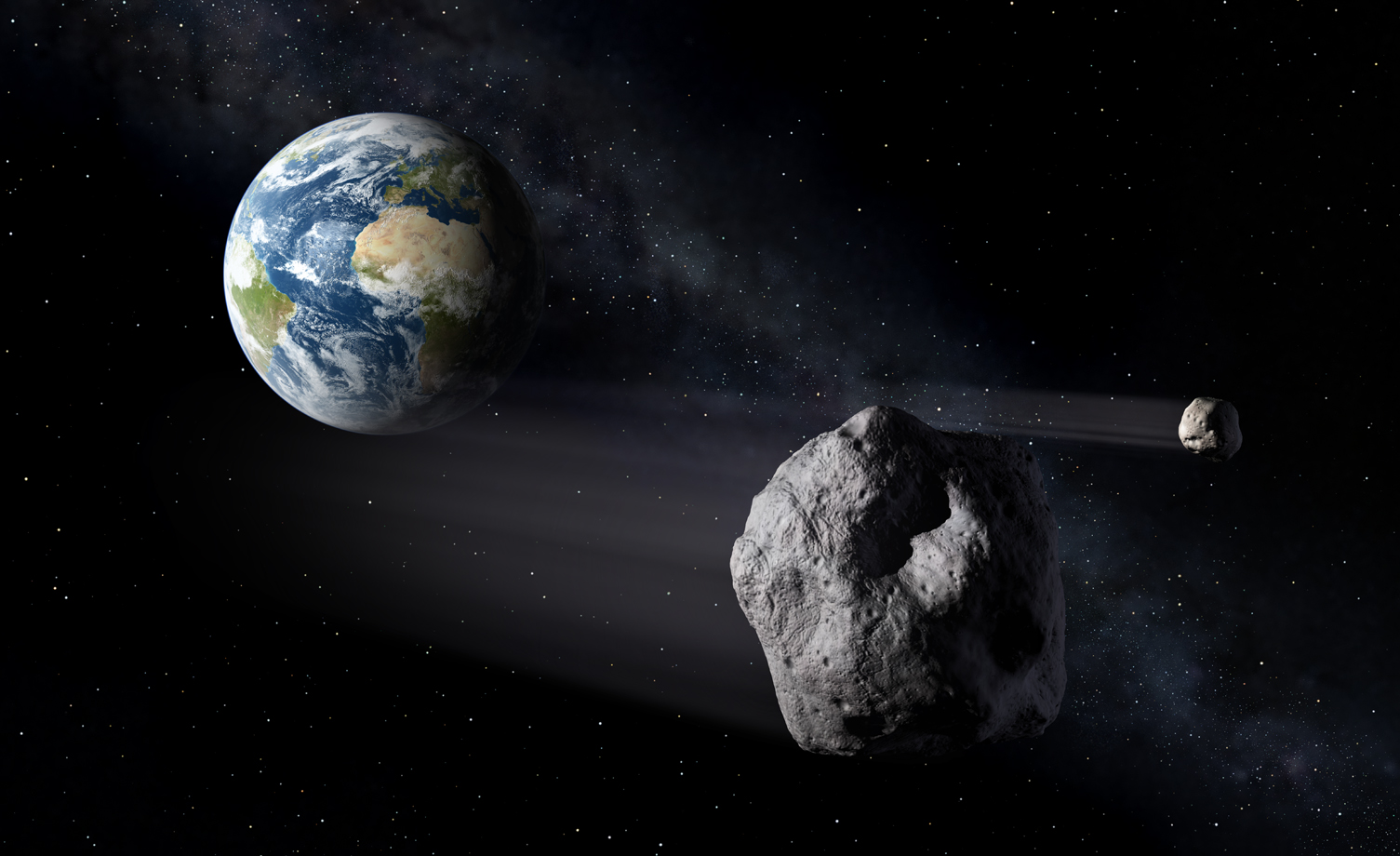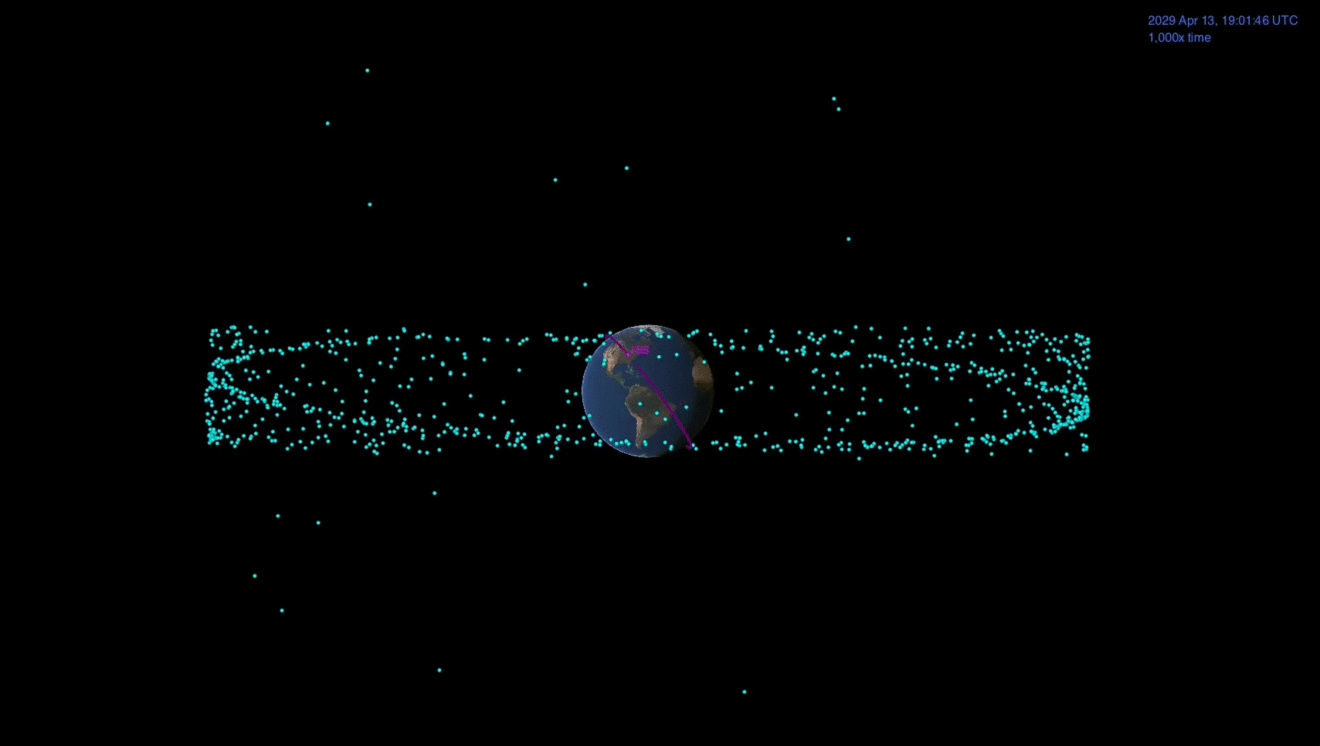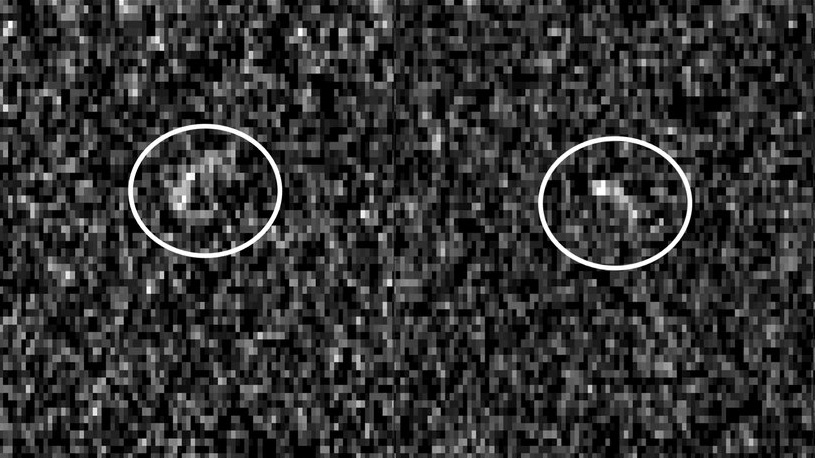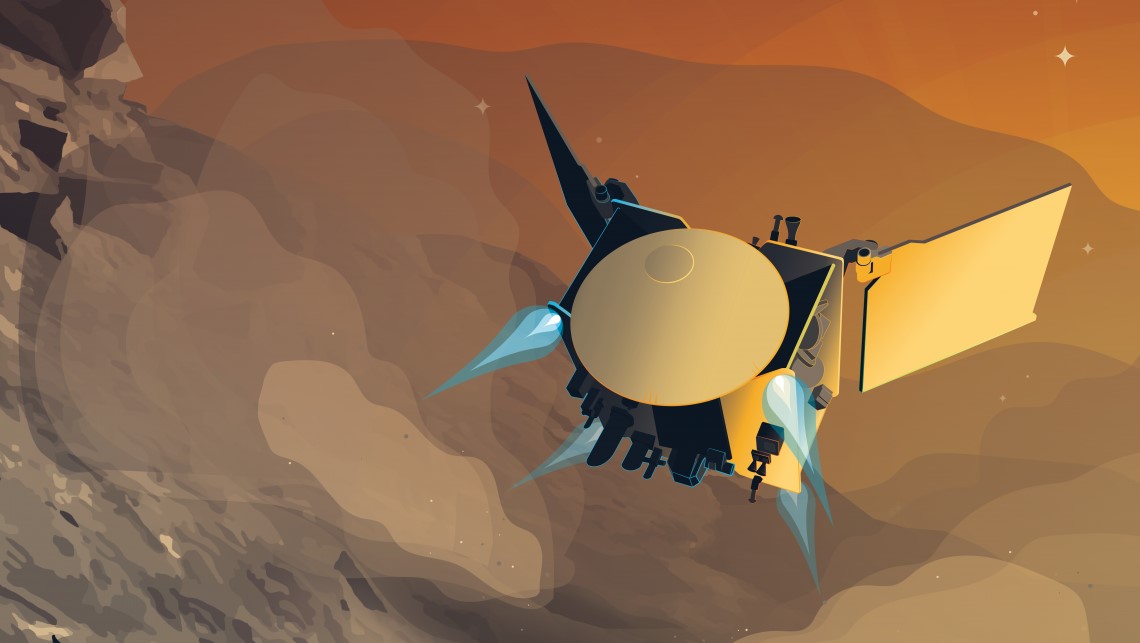Apophis: The infamous asteroid we thought might hit us
Asteroid Apophis won't collide with Earth in the next century, but its scientific impact will be tremendous.

Apophis is an asteroid that became notorious in 2004 as a potential threat to Earth.
Also known as asteroid 99942, the near-Earth object is estimated to be about 1,100 feet (340 meters) across and could cause serious damage to the planet's surface if it were to hit.
But observations of Apophis' orbit during a distant flyby in March 2021 led astronomers to conclude that the asteroid poses no threat for at least the next century, according to NASA.
Related: Huge asteroid Apophis flies by Earth on Friday the 13th in 2029. A lucky day for scientists.
Initially, scientists were unsure whether the passage of Apophis would result in a collision with Earth. The asteroid sat at the top of the European Space Agency's "impact risk list" of PHAs and NASA's Sentry Risk Table for 17 years, and was only removed in 2021. Even when this risk was negated, researchers still could not rule out the possibility that Earth's gravitational effects could influence the asteroid in such a way that one of its next visits could result in an impact, Space.com previously reported.
"Apophis is in the category of Potentially Hazardous Asteroids (PHAs) — asteroids with orbits that bring them very close to Earth now and for centuries in the future," said Richard Binzel, a planetary scientist at the Massachusetts Institute of Technology. "What makes Apophis the poster child for potentially hazardous asteroids is that it will make the closest known approach to Earth of any large asteroid this decade.
"But the three most important things about Apophis are: Apophis will miss the Earth. Apophis will miss the Earth. Apophis will miss the Earth," he told Space.com via email.
Although Apophis will not hit Earth anytime soon, the asteroid will make a close encounter with our planet on April 13, 2029, when it will pass within just 19,000 miles (31,000 kilometers). That's closer than most geosynchronous satellites and 10 times closer than the moon.
Because the space rock is so enormous, Apophis' close passage will be so bright that over 2 billion people in the Eastern Hemisphere will be able to witness it with the naked eye, said Binzel during the 2019 International Academy of Astronautics' Planetary Defense Conference.
We now know Apophis won't strike our planet in the near future. But because of its forthcoming flybys, the asteroid's time as an object of intense scientific interest is just beginning.
Related: Asteroid defense: Scanning the sky for threats from space

What is Apophis?
Discovered: 2004
Size: 1,100 feet (340 meters)
Estimated weight: 134 billion pounds (61 billion kilograms)
Composition: Rocky and metallic
In 2005, Binzel was part of a team that used reconnaissance telescopic observations to measure the color properties of Apophis and determine its composition. The group found that the asteroid resembles the most common class of meteorites, known as "ordinary chondrites," which are composed mostly of stone and silicates.
Classified as an S-type (stony-type) asteroid, according to NASA, Apophis also contains a mix of metals, including nickel and iron. The asteroid's shape is believed to be elongated and composed of two lobes , like a rocky space peanut.
Related: Meteor showers and shooting stars: Formation, facts and discovery
"Apophis is a piece of an early solar system planetesimal — a planetary building block that never coalesced into one of our solar system's planets," Binzel said. "It has been stored in the asteroid belt for 4.6 billion years and might be a fragment of a larger asteroid that broke apart in a collision in the asteroid belt. That collision may have cast the fragment we call Apophis on a trajectory that resulted in its current orbit that comes very close to Earth."
In 2005, the asteroid, still considered a threatening presence near Earth, was officially named "Apophis," after the Greek name for an ancient Egyptian representation of evil. According to a 2005 article in Astronomy magazine, Apophis was a serpent that dwelled in darkness and attempted to devour the sun god Ra each night as he passed across the sky.
Why did scientists think Apophis was dangerous?
Astronomers Roy A. Tucker, David J. Tholen and Fabrizio Bernardi discovered Apophis on June 19, 2004, while working at the Kitt Peak National Observatory in Arizona, according to NASA. At the time, the asteroid was identified as 2004 MN4. Due to technical issues and unfavorable weather conditions, the team was able to observe the new object for only two days. However, further observations quickly revealed a wealth of details about the asteroid.
The excitement of Apophis' discovery turned to concern when researchers calculated just how close the asteroid's orbit would bring the space rock to Earth.
From the visual observations taken in 2004, researchers at CNEOS calculated that there was around a 2.7% chance that the object would hit Earth in 2029. These probabilities were refined with radar observations the following year. While low, these estimates were still extreme enough to give Apophis the highest values on two systems used by astronomers to calculate how dangerous an asteroid is to our planet, each defined on the CNEOS website: the Torino Scale and the Palermo Technical Impact Hazard Scale.
By 2006, the probability of Apophis hitting Earth in 2029 was all but negated by additional calculations. But future impacts, particularly of the asteroid's flyby in 2068, could not be dismissed as easily. The path of Apophis after 2029 will depend on how Earth's gravity changes the asteroid's orbit, said Davide Farnocchia, an astrophysicist at NASA's Jet Propulsion Laboratory (JPL) who is studying the asteroid's trajectory.

"If Apophis passed through specific gravitational keyholes, the gravity of the Earth would tweak its orbit by just the right amount — or should I say the wrong amount — to put it on a collision course in a later year," Farnocchia told Space.com via email.
Because astronomers were unable to track Apophis from 2015 to 2019 (it was too close to the sun and, therefore, obscured by its light), further progress on ruling out a 2068 impact was not forthcoming. The asteroid seemed almost stubbornly determined to live up to its apocalyptic name.
When the asteroid once again moved away from our star and thus could be better observed, Farnocchia and his team resolved to tackle the problem head-on and better determine the asteroid's trajectory, finally resolving if it would impact Earth in 2068.
"At JPL's Center of Near-Earth Object Studies (CNEOS) we compute high-precision trajectories and assess the possibility of future impacts for all known asteroids," said Farnocchia, who relished the challenge that Apophis presented. "That's our daily bread and butter."
How did scientists decide Apophis was no danger?
Unseating Apophis from the top of several space agencies' risk lists was no easy feat. Farnocchia and his colleagues wove together radar and optical tracking data collected in late 2020 and early 2021 to come up with a precise trajectory for Apophis, according to a statement from NASA. The team then combined this newly acquired data with years of intense observations to come up with a clearer picture of Apophis' trajectory.
"Apophis has been extensively tracked since its discovery by both optical and radar telescopes," Farnocchia said. "Thanks to these data collected by astronomers all over the world we can precisely predict the motion of Apophis through the April 2029 flyby."
The team calculated that the orbital period of Apophis, or the time it takes to orbit the sun, will be stretched from 0.9 years to 1.2 years as a result of the asteroid's 2029 encounter with Earth.
Perhaps more significantly, data from 2020 and 2021 observations allowed the CNEOS crew to model how close Apophis will come to the gravitational keyholes that correspond to potential impacts with Earth in both 2036 and 2068. The CNEOS team also ruled out a potential impact for the next 100 years, Farnocchia said.
Related: Whew! Huge asteroid Apophis won't hit Earth in 2036
What if Apophis did hit Earth?
Predicting the effect of an Apophis-like asteroid hitting Earth is not easy. There isn't anything like it in the geological record of our planet. Other impactors have either been much larger, such as the dinosaur-killing asteroid that struck Earth 66 million years ago and caused the Chicxulub crater, or much smaller. And factors such as asteroid size, density and mass, as well as the angle and velocity at which the asteroid strikes, all affect how much damage a hit can cause.
"We have run simulations of an impact between Apophis and Earth, but at 340 meters across, the outcome of an Apophis-scale impact with Earth is very uncertain," said Gareth Collins, a professor in the Department of Earth Science and Engineering at Imperial College London. "Size and speed are the main factors, but the nature of the target site is also important.
"If the impact occurs in the ocean, it can generate hazardous tsunamis; on land, a lot more ejected dust is produced," Collins told Space.com in an email. "And, of course, a major factor is how close the impact happens to human populations."
Related: Dinosaur-killing asteroid triggered mile-high tsunami that spread through Earth's oceans
Collins estimates that if Apophis were to strike Earth at 45,000 mph (72,000 km/h) — the average speed of asteroid impacts — the energy released would be about 10 billion, billion joules (a 1 followed by 19 zeros). "This is equivalent to the explosive yield of the global nuclear arsenal," he said. "About 100,000 times more than the energy of the Chelyabinsk meteor and a million times more energy than the bombs dropped on Hiroshima."
The worst-case scenario for an impact this size would be if it were to occur close to a large population center or near a heavily populated coastline, Collins said. If this were to happen, devastating consequences would arise from a number of secondary effects, such as violent ground shaking, intense thermal radiation and atmospheric shock waves.
"Unless an asteroid similar to Apophis hits Earth and we can measure the consequences, our program will remain a 'best guess' and subject to large uncertainties," Collins said. "But close approaches do help us better understand asteroids and their likelihood of striking Earth in future."
What's next on the agenda for Apophis?
With the threat of an impact negated for a while, researchers can now focus on collecting scientific information. With years of planning to come before Apophis' next flyby in 2029, Apophis investigators are making plans to watch the asteroid's passage. They'll observe from the ground, but with the announcement of a new mission for asteroid-sampling spacecraft OSIRIS-REx, they'll have the opportunity to watch the event from space as well.
Farnocchia and his team will take advantage of a valuable scientific opportunity to observe how Apophis reacts to tidal forces when it's so close to Earth. "Among other things, the rotation state of Apophis could change" as a result of its close proximity, Farnocchia said. Observations of Apophis in 2029 also should give scientists a better idea of the asteroid's size, shape and composition, and even allow them to model the space rock's interior for the first time.
"By watching how Apophis might shake, rattle and roll, even just by a tiny amount, we will learn how it is put together on its inside," Binzel said. It's similar to how seismic waves traveling through Earth, the moon and Mars have been used to figure out what's beneath their surfaces. "Interior structure for a potentially hazardous asteroid is something we have never measured before. Apophis might just give us that chance."

Because Apophis seems to be similar to around 80% of the potentially hazardous asteroids (PHAs) identified so far, collecting data on it could help scientists learn how we might divert future PHAs should they threaten Earth in the future.
"Knowing how PHAs are put together might be some of the most valuable space physics knowledge ever obtained, in the event we ever had to put that knowledge to use to defend our planet from some future asteroid impact," Binzel said.
We're even more likely to get that knowledge now that OSIRIS-REx — soon to be renamed OSIRIS-APEX, for "Apophis Explorer" — is on the job, Space.com previously reported. After its successful primary mission to collect samples from asteroid Bennu in 2021 and its planned 2023 sample return to Earth, OSIRIS-APEX will extend its mission and explore Apophis soon after the asteroid's Earth flyby. According to NASA's OSIRIS-REx mission page, the spacecraft will observe the flyby and then use its gas thrusters to kick up and study small rocks and dust on Apophis' surface.
The passage of Apophis in 2029 is a must-see event, according to the researchers. "Objects of the size of Apophis come this close to Earth approximately only once every thousand years, on average," Farnocchia said. "Don't miss the chance to see it. I know I won't!"
Additional resources
Estimate what would happen if an asteroid of any size were to hit Earth, using the Earth Impact Effects Program created by Davide Farnocchia and his colleagues. Or, watch an animation of asteroid Apophis' 2029 close approach with Earth in this video from NASA JPL. And if you're interested in our near-Earth neighbors, learn more about other asteroids that will make close approaches to Earth, from NASA JPL.
Bibliography
CNEOS. (n.d.-a). Palermo technical impact hazard scale. NASA Center for Near Earth Object Studies. Retrieved November 16, 2022, from https://cneos.jpl.nasa.gov/sentry/palermo_scale.html
CNEOS. (n.d.-b). Torino impact hazard scale. NASA Center for Near Earth Object Studies. Retrieved November 16, 2022, from https://cneos.jpl.nasa.gov/sentry/torino_scale.html
Cooke, B. (2005, August 18). Asteroid Apophis set for a makeover. Astronomy.Com. https://astronomy.com/news/2005/08/asteroid-apophis-set-for-a-makeover
in depth: Osiris-rex. (2022, July 7). NASA Solar System Exploration; NASA. https://solarsystem.nasa.gov/missions/osiris-rex/in-depth
Nasa analysis: Earth is safe from asteroid apophis for 100-plus years. (2021, March 25) NASA Jet Propulsion Laboratory (JPL); JPL.
https://www.jpl.nasa.gov/news/nasa-analysis-earth-is-safe-from-asteroid-apophis-for-100-plus-years
Near-Earth Objects Coordination Centre. (2022, November 18). Risk list—NEO. European Space Agency. https://neo.ssa.esa.int/risk-list
Planetary Sciences Communications. (2022, September 27). In Depth | Apophis. NASA Solar System Exploration; NASA JPL. https://solarsystem.nasa.gov/asteroids-comets-and-meteors/asteroids/apophis/in-depth
Sentry: Earth impact monitoring. (n.d.). CNEOS. Retrieved November 18, 2022, from https://cneos.jpl.nasa.gov/sentry/
Yeomans, D., Chesley, S., & Chodas, P. (2004, December 23). Near-earth asteroid 2004 mn4 reaches highest score to date on hazard scale. Center for NEO Studies. https://cneos.jpl.nasa.gov/news/news146.html
Join our Space Forums to keep talking space on the latest missions, night sky and more! And if you have a news tip, correction or comment, let us know at: community@space.com.
Get the Space.com Newsletter
Breaking space news, the latest updates on rocket launches, skywatching events and more!

Robert Lea is a science journalist in the U.K. whose articles have been published in Physics World, New Scientist, Astronomy Magazine, All About Space, Newsweek and ZME Science. He also writes about science communication for Elsevier and the European Journal of Physics. Rob holds a bachelor of science degree in physics and astronomy from the U.K.’s Open University. Follow him on Twitter @sciencef1rst.
- Vicky SteinContributing Writer










